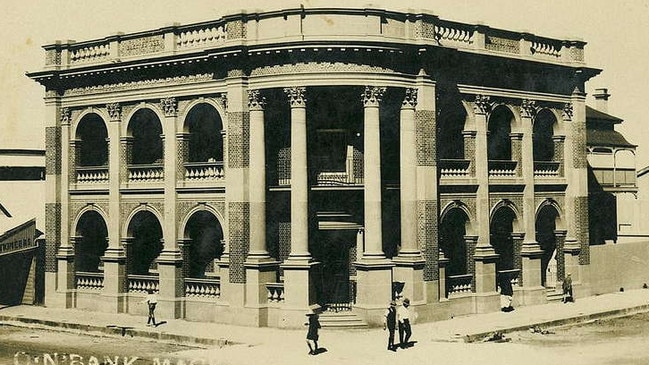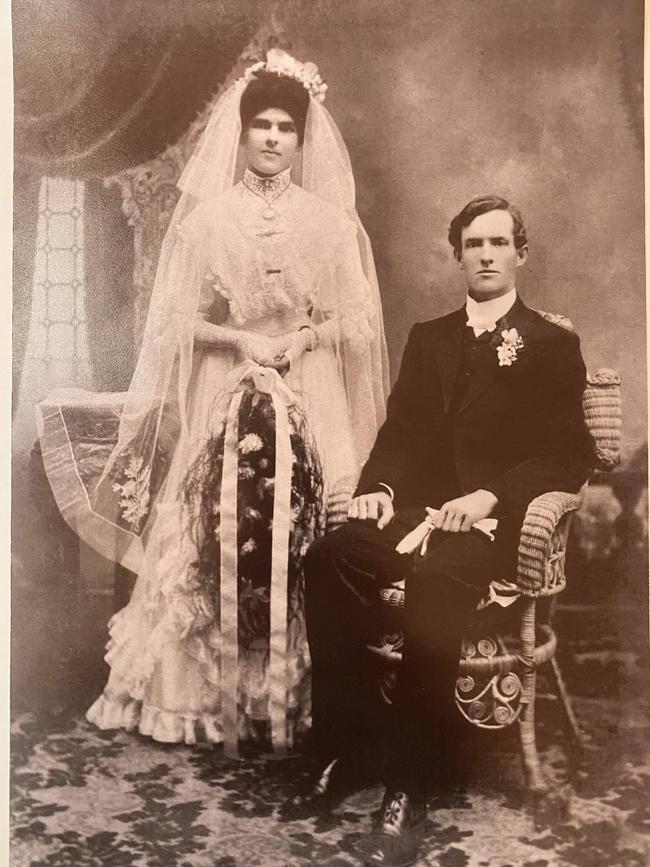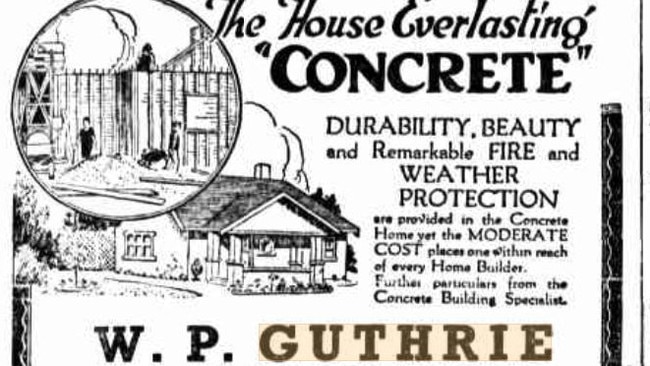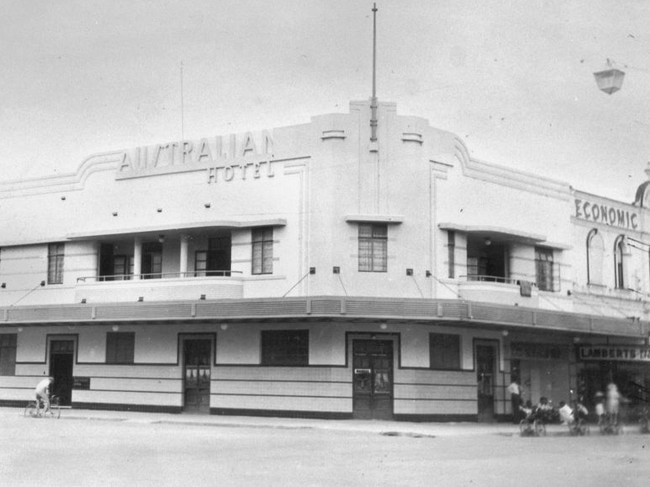How William Guthrie built up Mackay’s famed Art Deco style
The massive rebuilding exercise in the inter-war years changed Mackay’s facade in a unique style that holds to this day.
Community News
Don't miss out on the headlines from Community News. Followed categories will be added to My News.
After one of the most destructive cyclones in the history of Australia’s East Coast hit the Mackay region in 1918, a massive rebuilding exercise commenced during the inter-war years, resulting in the city having a large and impressive collection of new buildings, many of which still exist today.
Regeneration and growth were further fuelled by Mackay’s economic and civic growth which held strong during the 1920s and 1930s and only slowed during World War II as rationing and labour shortages started to take hold.
Several notable architects designed the new face of Mackay over the decades that followed – Langer, Orchard, Brown, and Faircloth to name a few, but it was the builders who brought their designs to life.
One of these was William Guthrie, who with his brother Frank, was the building contractor behind a large number of Mackay’s most iconic structures.
William Guthrie was born in Bundaberg in 1882, the first child of John Andrew Guthrie and Ellen Guthrie (nee Morrison).
Ellen was a Bundaberg local but John was of Irish descent, born in the coastal fishing town of Liscannor, County Claire, in 1852. The Guthries went on to have a further nine children.
In 1907 William married Ethel Maud Pegg and started to build a family of his own – and to establish a business.

By 1913 the Electoral Roll record for the Guthries recorded William as “contractor” sharing a house with two of his brothers – Michel and Patrick – who are both listed as “carpenter”.
It seems William’s Bundaberg building business was well-established. A year earlier in 1912, the Bundaberg Mail and Burnett Advertiser reports that Guthrie was to be the builder of a large residence at Oakwood with all manner of modern conveniences.
In 1910 he won the contract to build a new Catholic School in Woongarra Street, designed by FH Faircloth – a local architect whom he joined forces with later in Mackay.
Frederic Herbert “Herb” Faircloth is worthy of his own mention here.
Born in Maryborough in 1870, and trained by German born architect Anton Hettrich, Faircloth set up his own practice in Bundaberg in 1893 and was eventually responsible for the design of almost every major building there. He also designed a large number of replacement buildings in Childers after much of the main street was destroyed by fire in 1902.

By the early 1920s William and his brother Frank were building in Mackay.
Their original intent was to stay in Mackay for a year to complete the build of business premises and manager’s quarters for the Queensland National Bank, on the corner of Victoria and Wood Streets.
This was a Faircloth design in a classical revival architectural style and was completed in 1923 at a cost of 15,300 pounds. Faircloth had also been responsible for the design of the Queensland National Bank in Maryborough which bears many design similarities to its Mackay counterpart.
In 1925 the Guthrie business built the Masonic Temple in Wood Street, at a cost of 6500 pounds.
The building replaced an earlier temple that had been destroyed in the 1918 cyclone. This was another Faircloth design in the Classicism style beautifully interpreted by Guthrie; sadly, Faircloth died before it was completed, but would have surely been pleased with the final result.
By 1930 the Guthrie brothers were living in Mackay running their business out of William’s premises at 67 Nelson Street, while Frank was living on Shakespeare Street with his wife Grace. William’s family had grown.

By 1930 five children had been born to William and Ethel. Evidently family life was not easy for the couple. In 1931 their daughter Hazel died at the age of 18.
Their son William Patrick, who was invalided and living at home, died aged 18 in 1937, and in 1938 they lost another son – Mervyn Patrick – at the young age of 22.
Building work continued. In 1935 and 1936 Guthrie completed the St Mary’s Church, Tower and Convent on Juliet Street, Mackay.
The designer was Harold Vivian Marsh Brown, a prominent Mackay architect who designed a large number of Mackay buildings during his career, including Chaseley House, the Pioneer Shire Council building, Maguires Hotel, Hotel Mackay – to name just a few.
Guthrie also built the Art Deco styled Pioneer Shire Council building that Brown designed – completed in 1935.
It certainly was a busy time for the Guthrie firm. In 1940 Guthrie built the Australian Hotel on Victoria Street, this one designed by Edwin Roy Orchard in a functional style with Art Deco detailing.

Orchard also designed Aroney’s building – also built by Guthrie. In 1941 Guthrie built the William’s building – designed by HVM Brown – with distinctive Art Deco features.
While being remembered for their involvement in the more iconic buildings in Mackay, the Guthrie partnership advertised as house builders and general maintenance providers in the town.
Doubtless many houses remain that were built by this formidable team. William’s partnership with Frank, that started as a one-year stint in Mackay, ended up lasting for 36 years.
Prominent in the local community, William had run for local council a number of times in Bundaberg, and in 1951 was the president of the Mackay branch of the Queensland Master Builders Association.
Ethel Guthrie passed away in 1951 and William died in 1959. Frank outlived him by some 24 years, passing away in 1983.
The first stage of the Mackay Ring Road was completed in September 2020 and included the construction of some four crossings, all of which have been named for Mackay locals who had a lasting impact on Mackay’s history.
It was fitting therefore that the crossing of Fursden Creek was named the William and Frank Guthrie Bridge, in recognition of the huge impact that this formidable building team made to the face of Mackay, and will continue to do so, for many years to come.
Vicky Bowden
Sugar City Art Deco and Modernism Society



